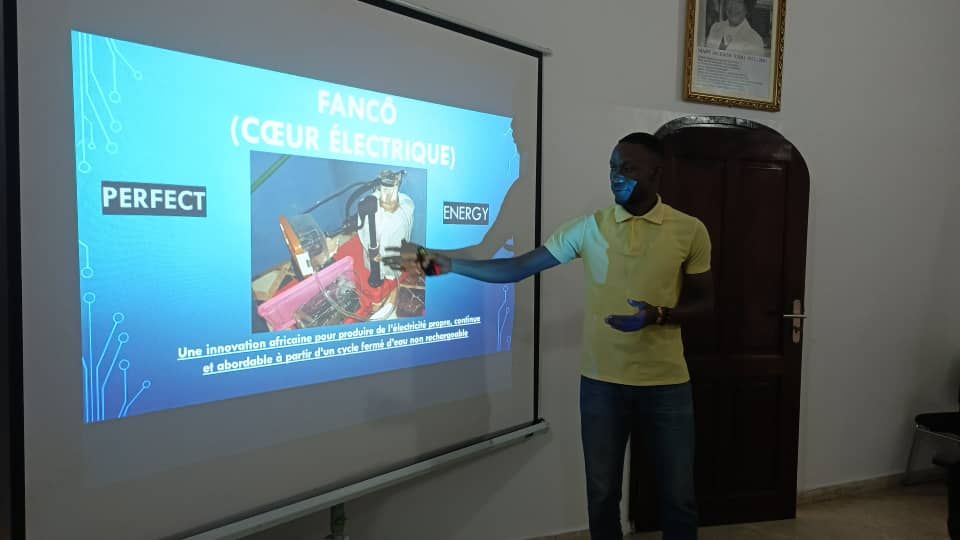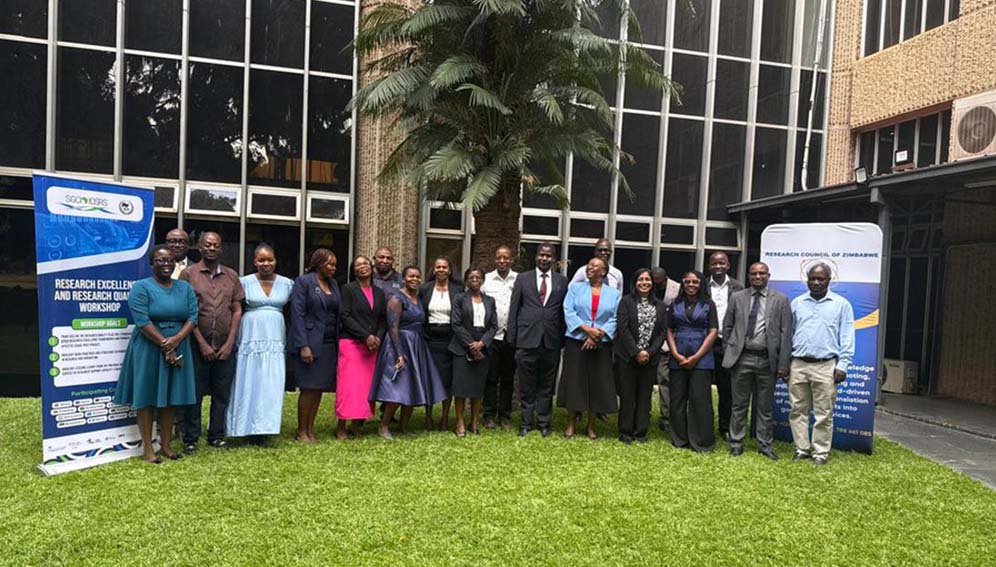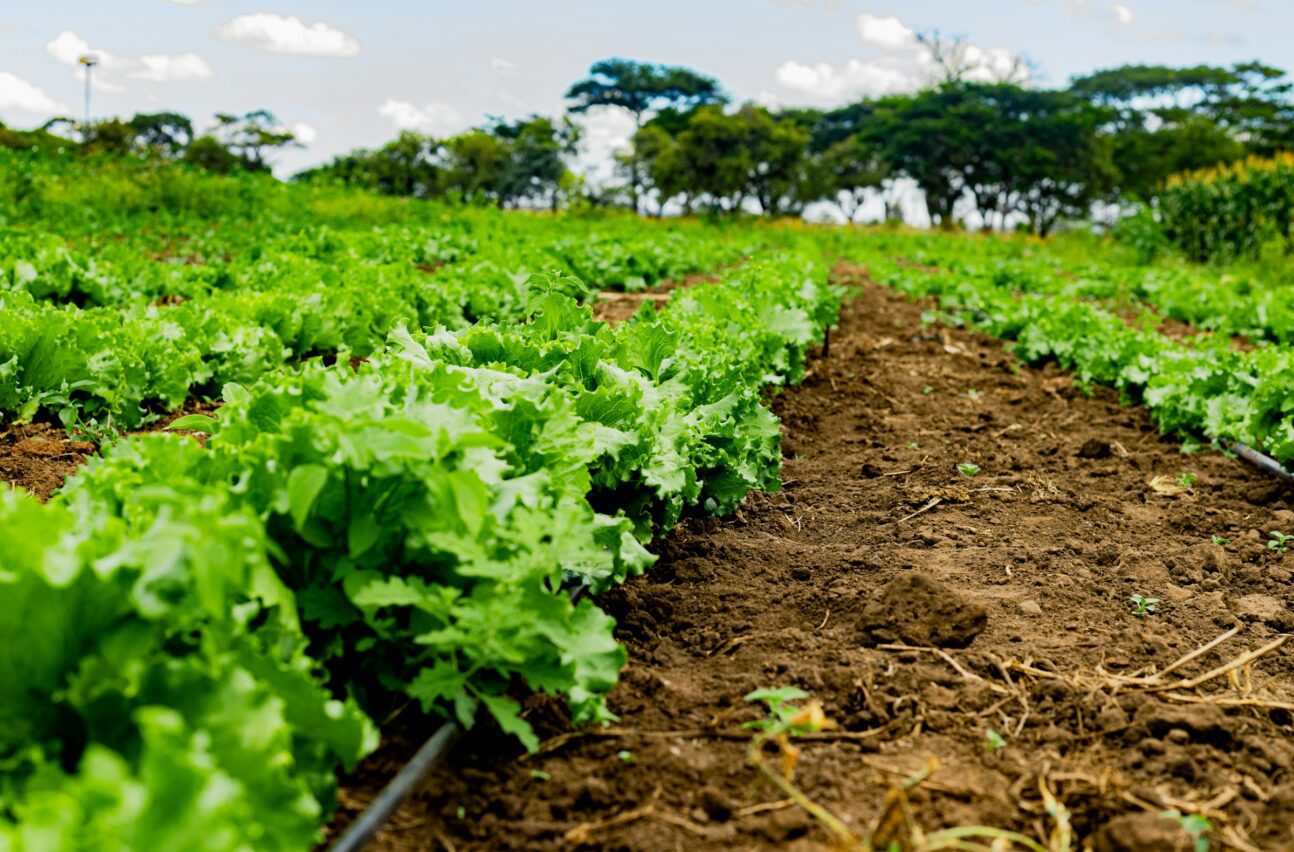SGCI News
[Manzini, SciDev.Net] Zimbabwean farmer Freedom Sibanda used to sell his goats for US$30 each. Now, through crossbreeding techniques, one goat can fetch up to US$60 at market. Many smallholder farmers…
- Artificial insemination improves Zimbabwean livestock
- Researchers recorded a 35 per cent fertility increase in poultry
- ‘Service centres’ could help scale-up
[Manzini, SciDev.Net] Zimbabwean farmer Freedom Sibanda used to sell his goats for US$30 each. Now, through crossbreeding techniques, one goat can fetch up to US$60 at market.
Many smallholder farmers across Zimbabwe struggle with low livestock productivity and poverty. Traditional breeding methods often fail, leaving families with poor-quality animals and meagre incomes.
When Sibanda crossbred artificially inseminated goats with naturally-bred indigenous goats from Zimbabwe’s Matabele region, he noticed significant improvements in fertility, size, and disease resistance in the crossbred goats.
“This isn’t just good for me but benefits the whole community,” he said.
“The meat quality is better and more nutritious, so my family eats healthier, and we can sell more at higher prices.”
Behind this improvement is a team of researchers at Lupane State University testing low-cost reproductive technologies, including artificial insemination and crossbreeding in both poultry and goats, with early results showing striking gains.
They evaluated the impact of artificial insemination on goats and poultry across a number of smallholder farms.
While artificial insemination alone did not significantly outperform natural mating in goat fertility rates, both averaging around 85 per cent, offspring resulting from crossbreeding the two lines exhibited superior performance in both size and reproductive success.
Female Matabele-Boer crosses, for instance, reached up to 57.5kg, compared to just 42.3kg in purebred Matabele goats.
In poultry, however, artificial insemination delivered a more dramatic result.
Fertility rates jumped from 54 per cent with natural mating to 89 per cent with artificial insemination.
Semen distribution
Artificial insemination is a technique already widely used in agriculture in many other countries to improve genetic quality and productivity in cattle and poultry.
In Zimbabwe, most poultry farms are owned by small-scale farmers, who typically keep one rooster with several hens. But roosters can be picky and mate only with their favourites.
With artificial insemination, farmers take semen from the rooster and give it to every hen.
“Artificial insemination allows for better semen distribution, so every hen gets bred properly,” explains Fortune Jomane, the lead researcher of the project and senior lecturer at Lupane State University.
“In contrast, natural mating often faces issues, like roosters only choosing a few hens, which lowers fertility.”
Extenders
Jomane and his team developed special solutions that keep sperm alive longer. They used three types of extenders: a so-called “ringer’s solution” containing sodium chloride, potassium chloride, and sodium lactate; an extender with glucose, and a saline solution. They compared these to undiluted semen to assess their effectiveness.
“We found that the ringer’s solution worked very well, maintaining osmotic balance, preventing dehydration, and preserving the structural integrity of the sperm while maintaining pH levels,” Jomane said.
“The extenders nourish the sperm and serve as bulking agents, helping to maintain semen quality for extended periods.”
The research project, which ran from 2023 to 2024, was funded with US$230,000 from the Science Granting Councils Initiative through the Research Council of Zimbabwe (RCZ).
Forbes Chinyemba, senior technical officer for research management at RCZ, said ten extension officers were trained to support farmers in using artificial insemination techniques in chickens to improve fertility rates.
“If you empower government extension officers, you empower the farmer too,” said Chinyemba.
Hands-on experience
Sibonangabo Sikhondze, a livestock expert from Eswatini, is convinced of the advantages of artificial insemination.
He stresses the need for community training, saying farmers learn best through hands-on experience.
To make the technique more accessible, Sikhondze recommends setting up local artificial insemination service centres, as well as awareness campaigns to help communities understand the advantages.
Jomane says some farmers are sceptical about the effectiveness of artificial insemination, while transport issues and limited communication can also be an obstacle for remote farmers.
Flooded rivers during the rainy season block access to farms and poor mobile network coverage makes it hard to contact farmers. Power shortages affect the cold storage needed to keep semen viable.
Related News
Councils seek solutions to research financing crisis
African countries are working to strengthen research quality, ethical practice, and grant management through the Research Excellence and Good Financial Grant Practices Workshop. The Science Granting Councils Initiative (SGCI), together with the Association of African Universities and Senegal’s Ministry of Higher Education, Research and Innovation,…
Innovation awards boost Côte d’Ivoire’s national research drive
The Fund for Science, Technology and Innovation (FONSTI) opened the audition phase for the FONSTI Innovation Prize 2025, marking a decisive moment in a process launched earlier this year to strengthen Côte d’Ivoire’s innovation ecosystem. The auditions follow the official launch of the inaugural Innovation…
Zimbabwe moves to strengthen research governance
With the growing need to improve the quality, integrity, and impact of scientific work in the country, the Research Council of Zimbabwe (RCZ) has convened a three-day Research Excellence and Research Ethics Workshop aimed at strengthening governance and ethical standards across the national research system….
SGCI funded projects
Rwanda’s integrated approach to sustainable agriculture and nutrition
Project Titles & Institution Areas of Research Number of Projects being funded Project Duration Grant Amount In-Kind Distribution Council Collaboration with other councils





